Natasha Bowdoin’s installation Maneater takes over the entirety of MASS MoCA’s Hunter Hallway exhibition space. This meticulously layered work expands from floor to ceiling and spans the length of the corridor space, where it even wraps around an exit door onto a sidewall. Bowdoin imagines a space full of drawn and printed plants, vines, and floral clusters which appear healthy and alive, full of potential for further expansion.
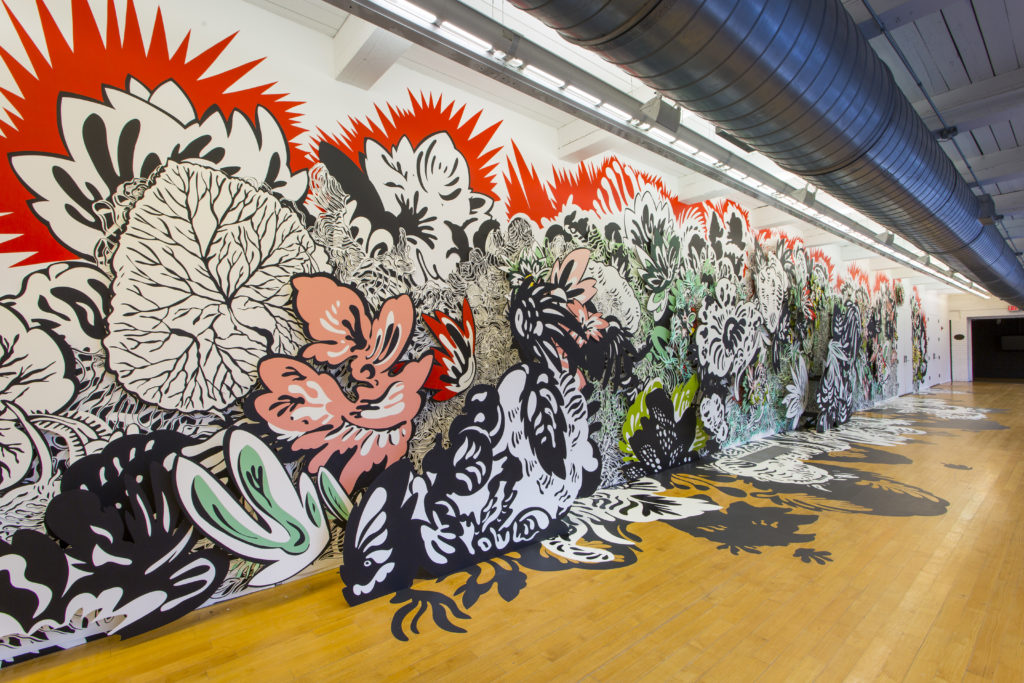
Natasha Bowdoin, Maneater, 2017-18, Gouache, acrylic, and ink on cut paper, Photo: David Dashiell, Courtesy MASS MoCA
The growth feels ordered and chaotic all at once. The exhibition brochure explains, “Referencing such sources as Golden Age children’s book illustrations, 19th-century botanical drawings, floral textile patterns, lunar maps, and prints of underwater sea life, Bowdoin’s fragile, lush installations shift and change as viewers explore their surfaces.” Fabricated from large, cut floral shapes and patterning, plant elements protrude from the wall to take on a sculptural form with two-dimensional prints layered underneath. Color and scale visually echo and simultaneously contrast one another. Rather than creating depth, an impenetrable density of botanical forms is achieved as they overlap and interconnect. The barrier formed by the plant forms is suggestive of a demarcation in knowing. What exists beyond the wall of vines and constructed jungle is new territory, an unknown space. The viewer’s position is between the known and unknown as he or she becomes acutely aware of the physical space and curious about what remains to be discovered.
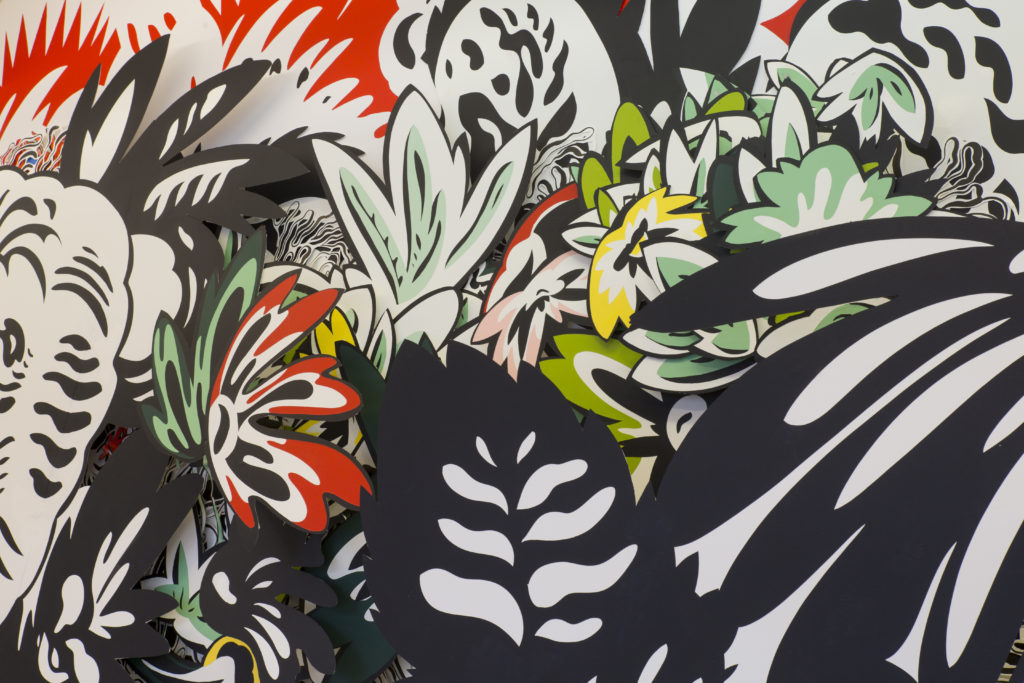
Natasha Bowdoin, Maneater, 2017-18, Gouache, acrylic, and ink on cut paper, Photo: David Dashiell, Courtesy MASS MoCA
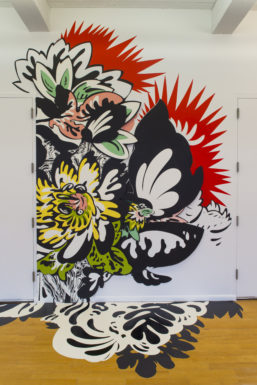
Natasha Bowdoin, Maneater, 2017-18, Gouache, acrylic, and ink on cut paper, Photo: David Dashiell, Courtesy MASS MoCA
The installation is titled Maneater after the Hall & Oates song about the destruction that results from the seduction of a woman. Playing on this, Bowdoin suggests the alluring floral prints could possess seductive danger. The symbolism of different kinds of flowers can communicate varied and even conflicting messages from love to loss. The abstraction of the floral forms makes them unidentifiable with certainty; rather elements of several botanical forms seem to be present in one another, permitting a much broader interpretation. Bowdoin accents the whimsical forms with vibrant colors such as electric greens, cadmium reds, as well as coral, black, and white.
Like a maneater, the work is alluring. It invites the viewer to come closer to see the magic to the layers, and paper pieces spilling onto the floor to suggest shadows of plants on the wall. Because the paper plants are cartoonishly enlarged, it can evoke both playfulness and reservation from the viewer. How far should one immerse themselves into this landscape? Some of the forms are left black and white, suggesting the object may be colored in later, or that it’s color has been transferred to another object. As with the cyclical nature of life and death, new life forms out of the plants that came before.
- Natasha Bowdoin, Maneater, 2017-18, Gouache, acrylic, and ink on cut paper, Photo: David Dashiell, Courtesy MASS MoCA
- Natasha Bowdoin, Maneater, 2017-18, Gouache, acrylic, and ink on cut paper, Photo: David Dashiell, Courtesy MASS MoCA
- Natasha Bowdoin, Maneater, 2017-18, Gouache, acrylic, and ink on cut paper, Photo: David Dashiell, Courtesy MASS MoCA
- Natasha Bowdoin, Maneater, 2017-18, Gouache, acrylic, and ink on cut paper, Photo: David Dashiell, Courtesy MASS MoCA
- Natasha Bowdoin, Maneater, 2017-18, Gouache, acrylic, and ink on cut paper, Photo: David Dashiell, Courtesy MASS MoCA
- Natasha Bowdoin, Maneater, 2017-18, Gouache, acrylic, and ink on cut paper, Photo: David Dashiell, Courtesy MASS MoCA

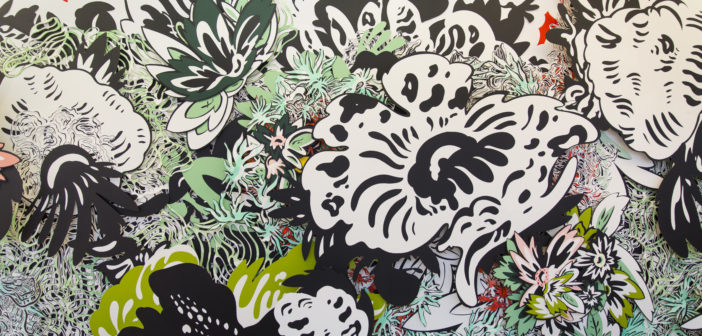
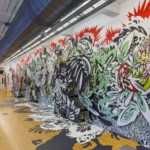
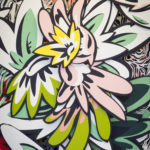
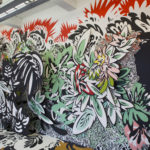

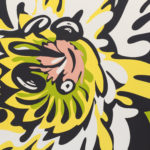
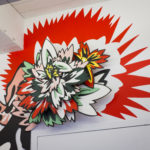

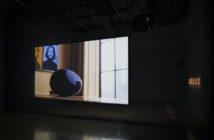

1 Comment
I’m sorry — references to ‘lunar maps’?? How about 20c. art history… Matisse’s swimming pool perhaps?